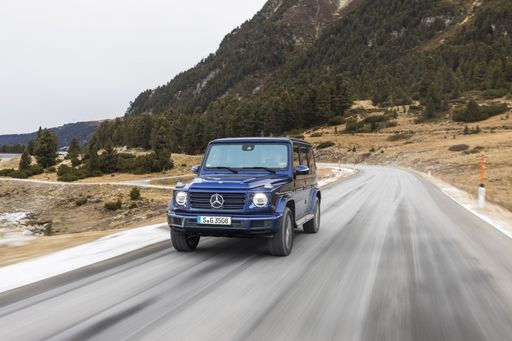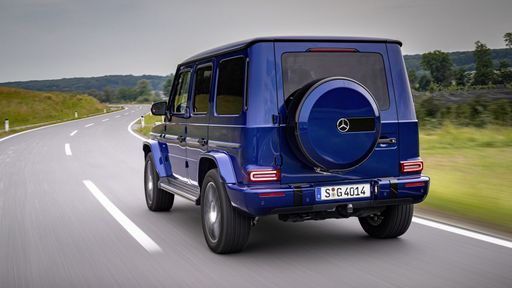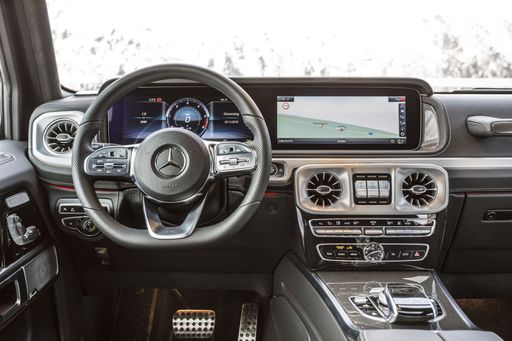Alfa Romeo Junior vs Mercedes G Class – Which one offers the better deal?
Everyday use, family trips or long-distance drives – here’s where the differences show.
Discover whether Alfa Romeo Junior or Mercedes G Class fits your lifestyle better.
Costs and Efficiency:
Looking at overall running costs, both models reveal some interesting differences in everyday economy.
Alfa Romeo Junior has a decisively advantage in terms of price – it starts at 25700 £, while the Mercedes G Class costs 106600 £. That’s a price difference of around 80919 £.
Fuel consumption also shows a difference: Alfa Romeo Junior manages with 4.80 L and is therefore clearly more efficient than the Mercedes G Class with 8.70 L. The difference is about 3.90 L per 100 km.
In terms of energy consumption, the advantage goes to the Alfa Romeo Junior: with 15.10 kWh per 100 km, it’s clearly more efficient than the Mercedes G Class with 28 kWh. That’s a difference of about 12.90 kWh.
As for range, the Mercedes G Class performs to a small extent better – achieving up to 468 km, about 58 km more than the Alfa Romeo Junior.
Engine and Performance:
Power, torque and acceleration are the classic benchmarks for car enthusiasts – and here, some clear differences start to show.
When it comes to engine power, the Mercedes G Class has a clearly edge – offering 605 HP compared to 280 HP. That’s roughly 325 HP more horsepower.
In acceleration from 0 to 100 km/h, the Mercedes G Class is evident quicker – completing the sprint in 4.40 s, while the Alfa Romeo Junior takes 5.90 s. That’s about 1.50 s faster.
In terms of top speed, the Mercedes G Class performs hardly perceptible better – reaching 220 km/h, while the Alfa Romeo Junior tops out at 206 km/h. The difference is around 14 km/h.
There’s also a difference in torque: Mercedes G Class pulls convincingly stronger with 1164 Nm compared to 345 Nm. That’s about 819 Nm difference.
Space and Everyday Use:
Whether family car or daily driver – which one offers more room, flexibility and comfort?
Both vehicles offer seating for 5 people.
In curb weight, Alfa Romeo Junior is significantly lighter – 1380 kg compared to 2485 kg. The difference is around 1105 kg.
In terms of boot space, the Mercedes G Class offers noticeable more room – 640 L compared to 415 L. That’s a difference of about 225 L.
In maximum load capacity, the Mercedes G Class performs evident better – up to 2010 L, which is about 730 L more than the Alfa Romeo Junior.
When it comes to payload, Mercedes G Class decisively takes the win – 715 kg compared to 420 kg. That’s a difference of about 295 kg.
Who comes out on top?
Overall, the Mercedes G Class shows itself to be shows small but notable strengths and secures the title of DriveDuel Champion.
It convinces with the more balanced overall package and proves to be the more versatile choice for everyday use.
 @ Mercedes-Benz Group Media
@ Mercedes-Benz Group Media
Mercedes G Class
Alfa Romeo Junior
The Alfa Romeo Junior captures the essence of Italian design with its sleek lines and compact dimensions, making it an icon of elegance and performance. With a spirited driving experience and a charming retro aesthetic, it appeals to enthusiasts and casual drivers alike. This delightful car embodies the brand's rich heritage while remaining a fun and engaging option for those seeking a unique automotive experience.
details @ Alfa Romeo / Stellantis Media
@ Alfa Romeo / Stellantis Media
 @ Alfa Romeo / Stellantis Media
@ Alfa Romeo / Stellantis Media
 @ Alfa Romeo / Stellantis Media
@ Alfa Romeo / Stellantis Media
Mercedes G Class
The Mercedes-Benz G-Class stands as a symbol of rugged luxury, combining robust off-road capabilities with sophisticated design. Its iconic boxy shape and imposing presence are complemented by a lavish interior that offers a blend of comfort and cutting-edge technology. Despite its longstanding heritage, the G-Class continues to evolve, maintaining its status as a premier choice for those seeking both adventure and opulence.
details @ Mercedes-Benz Group Media
@ Mercedes-Benz Group Media
 @ Mercedes-Benz Group Media
@ Mercedes-Benz Group Media
 @ Mercedes-Benz Group Media
@ Mercedes-Benz Group Media
 @ Alfa Romeo / Stellantis Media
@ Alfa Romeo / Stellantis Media
|
 @ Mercedes-Benz Group Media
@ Mercedes-Benz Group Media
|
|
|
|
Costs and Consumption |
|
|---|---|
|
Price
25700 - 41600 £
|
Price
106600 - 171000 £
|
|
Consumption L/100km
4.8 - 5.4 L
|
Consumption L/100km
8.7 - 14.7 L
|
|
Consumption kWh/100km
15.1 - 17.5 kWh
|
Consumption kWh/100km
28 kWh
|
|
Electric Range
344 - 410 km
|
Electric Range
468 km
|
|
Battery Capacity
0.4 - 51 kWh
|
Battery Capacity
116 kWh
|
|
co2
0 - 119 g/km
|
co2
0 - 336 g/km
|
|
Fuel tank capacity
44 - 45 L
|
Fuel tank capacity
100 L
|
Dimensions and Body |
|
|---|---|
|
Body Type
SUV
|
Body Type
Off-Roader
|
|
Seats
5
|
Seats
5
|
|
Doors
5
|
Doors
5
|
|
Curb weight
1380 - 1689 kg
|
Curb weight
2485 - 3085 kg
|
|
Trunk capacity
340 - 415 L
|
Trunk capacity
620 - 640 L
|
|
Length
4173 mm
|
Length
4624 - 4873 mm
|
|
Width
1781 mm
|
Width
1931 - 1984 mm
|
|
Height
1505 - 1538 mm
|
Height
1973 - 1983 mm
|
|
Max trunk capacity
1205 - 1280 L
|
Max trunk capacity
1990 - 2010 L
|
|
Payload
390 - 420 kg
|
Payload
415 - 715 kg
|
Engine and Performance |
|
|---|---|
|
Engine Type
Electric, Petrol MHEV
|
Engine Type
Electric, Petrol MHEV, Diesel MHEV
|
|
Transmission
Automatic
|
Transmission
Automatic
|
|
Transmission Detail
Dual-Clutch Automatic, Reduction Gearbox
|
Transmission Detail
Reduction Gearbox, Automatic Gearbox
|
|
Drive Type
Front-Wheel Drive, All-Wheel Drive
|
Drive Type
All-Wheel Drive
|
|
Power HP
136 - 280 HP
|
Power HP
387 - 605 HP
|
|
Acceleration 0-100km/h
5.9 - 9.1 s
|
Acceleration 0-100km/h
4.4 - 5.8 s
|
|
Max Speed
150 - 206 km/h
|
Max Speed
180 - 220 km/h
|
|
Torque
230 - 345 Nm
|
Torque
760 - 1164 Nm
|
|
Number of Cylinders
3
|
Number of Cylinders
6 - 8
|
|
Power kW
100 - 207 kW
|
Power kW
285 - 445 kW
|
|
Engine capacity
1199 cm3
|
Engine capacity
2989 - 3982 cm3
|
General |
|
|---|---|
|
Model Year
2024 - 2025
|
Model Year
2024 - 2025
|
|
CO2 Efficiency Class
A, C, D
|
CO2 Efficiency Class
A, G
|
|
Brand
Alfa Romeo
|
Brand
Mercedes-Benz
|
What drive types are available for the Alfa Romeo Junior?
Available configurations include Front-Wheel Drive or All-Wheel Drive.
The prices and data displayed are estimates based on German list prices and may vary by country. This information is not legally binding.
